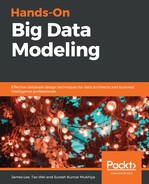In the preceding sections, we discussed distributed and parallel DBMS. But it is important to know that all the data problems discussed previously may not be required for big data processing. It depends on the type of applications you are trying to build. In this section, we are going to discuss the need for MapReduce-style systems.
DBMS has effectively used parallelism with efficient storage and better query performances. They have an efficient algorithm to optimize performance and increase efficiency. However, these classical DBMSes do not take machine failure into account, unlike MapReduce, which was originally developed for the distributive processing of large amounts of data. MapReduce was done over Hadoop filesystems, and hence the issues such as node failure were automatically accounted for. It was utilized in complex applications, such as data clustering or data mining, with highly complicated algorithms. The mixture of data-management requirements and data-processing analysis requirements has created several challenges in the data-management world. Some of the challenges include an ability to handle a high volume of data, the ability to handle real-time data, and the ability to handle streaming data.
This combination of traditional requirements and new requirements is leading to new capabilities and products in big data management technology. One of these technologies is MapReduce-style data processing. In the upcoming chapters, we will be discussing some of the modern-day data-management systems that have some of these capabilities.
